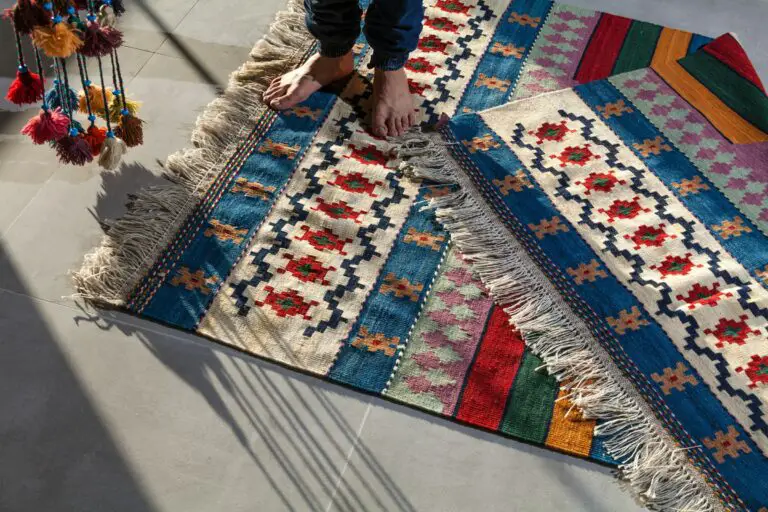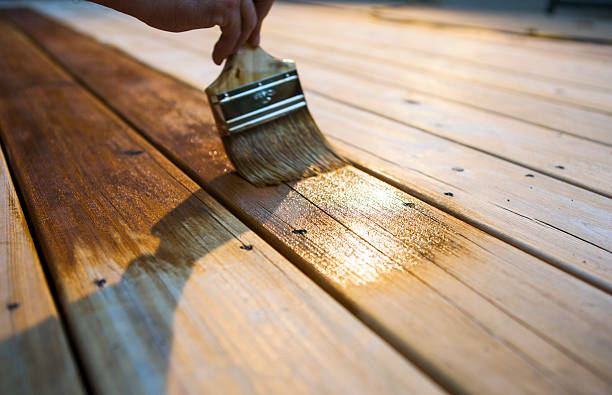How to Hang a Tapestry: A Simple Guide for Beginners

Hanging a tapestry can be a great way to add some color and personality to a room. However, it can also be a bit intimidating if you’ve never done it before. Luckily, with a few simple steps, anyone can hang a tapestry like a pro.
The first step is to choose the right location for your tapestry. Consider the size of the tapestry and the furniture in the room. You want to make sure it’s not too small or too large for the space, and that it complements the other décor in the room. Once you’ve found the perfect spot, it’s time to gather your materials. You’ll need a tapestry rod or dowel, brackets or hooks, a measuring tape, a level, and a drill or hammer and nails.
Choosing the Right Tapestry
When it comes to choosing a tapestry, there are a few things to consider. From the size to the material and design, each factor plays a significant role in the final look and feel of the tapestry. Here are some tips to help you choose the right tapestry for your space.
Consider the Size
The first thing to consider when choosing a tapestry is the size. You’ll want to measure the space where you plan to hang the tapestry to ensure that it fits properly. If you’re looking to make a statement, a large tapestry can be a great option. However, if you have a smaller space, a smaller tapestry may be more appropriate.
Selecting the Material
Tapestries come in a variety of materials, including cotton, wool, silk, and polyester. Each material has its own unique look and feel, so it’s important to choose one that fits your style and needs. Cotton and wool are durable and easy to clean, while silk and polyester are more delicate and may require special care.
Picking a Design
The design of the tapestry is another important factor to consider. Do you want a bold, colorful tapestry that makes a statement, or a more subtle design that blends in with your décor? Think about the colors and patterns in your space and choose a tapestry that complements them. It’s also important to consider the theme or style of your space and choose a tapestry that fits in with that aesthetic.
By considering the size, material, and design of your tapestry, you can choose a piece that adds beauty and style to your space.
Preparing to Hang Your Tapestry
Gather Necessary Tools
Before hanging your tapestry, it’s important to gather all the necessary tools to ensure a smooth and easy installation. Here are some of the tools you will need:
- Measuring tape
- Pencil
- Level
- Hammer
- Nails or screws
- Wall anchors (if necessary)
- Stud finder (if hanging on a drywall)
Make sure to have all the tools ready before starting the installation process to avoid any delays.
Wall Preparation
To ensure your tapestry hangs securely and looks its best, it’s important to prepare the wall before hanging. Here are some steps to follow:
- Clean the wall surface: Remove any dirt or dust from the wall surface using a clean cloth. This will help the tapestry adhere properly to the wall.
- Locate studs: If you are hanging the tapestry on drywall, use a stud finder to locate the studs in the wall. This will help you determine where to place the nails or screws.
- Mark the wall: Use a pencil to mark the spot on the wall where you want to hang the tapestry. Use a measuring tape to ensure the tapestry is centered and level.
- Install wall anchors (if necessary): If you are hanging the tapestry on a drywall and cannot locate studs, install wall anchors to ensure a secure hold.
By following these steps, you can ensure that your tapestry is securely and properly hung, adding a unique and beautiful touch to your home décor.
Hanging Techniques
Using Adhesive Strips
One of the easiest ways to hang a tapestry is by using adhesive strips. These strips are perfect for lightweight tapestries and can be easily removed without damaging the walls. To use adhesive strips, simply attach them to the back of the tapestry and press firmly against the wall. Be sure to follow the manufacturer’s instructions for weight limits and application.
Mounting with Nails or Tacks
For heavier tapestries, mounting with nails or tacks is a more secure option. To hang a tapestry with nails or tacks, first determine the placement and mark the wall with a pencil. Then, hammer the nail or tack into the wall at the marked spot, leaving enough space for the tapestry to hang. Finally, hang the tapestry on the nail or tack and adjust as needed.
Using a Rod or Dowel
Using a rod or dowel is another option for hanging tapestries. This method works well for tapestries with a sleeve or pocket sewn into the back. Simply slide the rod or dowel through the sleeve and hang the rod on two hooks or nails. This method allows the tapestry to hang straight and can also add a decorative touch to the display.
Overall, there are several ways to hang a tapestry, and the best method depends on the weight and style of the tapestry as well as personal preference. By following these hanging techniques, anyone can create a beautiful and secure display for their tapestry.

Maintenance and Care
Regular Cleaning
To keep your tapestry looking its best, it’s important to regularly clean it. The frequency of cleaning will depend on the location of the tapestry and the amount of dust and dirt it collects. A tapestry hung in a high-traffic area or near a kitchen may need to be cleaned more often than one hung in a bedroom.
To clean your tapestry, use a soft-bristled brush or vacuum with a soft brush attachment. Gently brush or vacuum the surface of the tapestry to remove any loose dirt or dust. If there are any stains or spots on the tapestry, use a damp cloth to gently blot the area. Avoid rubbing or scrubbing the tapestry, as this can damage the fibers.
Damage Prevention
Preventing damage to your tapestry is key to ensuring it lasts for years to come. Here are a few tips to keep in mind:
- Avoid hanging your tapestry in direct sunlight, as this can cause the colors to fade over time.
- Keep your tapestry away from moisture and humidity, as this can cause mold or mildew to form.
- Be careful when handling your tapestry, as pulling or tugging on the fibers can cause damage.
- If you need to store your tapestry, make sure it’s clean and dry before storing it in a cool, dry place. Avoid folding or creasing the tapestry, as this can cause permanent damage.
By following these simple maintenance and care tips, you can keep your tapestry looking beautiful for years to come.
Frequently Asked Questions (FAQs)
Q: What are effective methods for hanging a tapestry without causing damage to walls?
A: There are several methods for hanging a tapestry without causing damage to walls. One method is to use adhesive strips or hooks specifically designed for hanging tapestries. These strips or hooks can be easily removed without leaving any residue or damage to the wall. Another method is to use tension rods. Simply place the rod between two walls and hang the tapestry from the rod. This method is also easy to remove and does not cause any damage.
Q: Can I use a dowel to hang my tapestry, and if so, how?
A: Yes, a dowel can be used to hang a tapestry. First, attach a sleeve to the back of the tapestry. Then, slide the dowel through the sleeve and attach hooks or wire to the ends of the dowel. Finally, hang the tapestry from the hooks or wire.
Q: What is the best way to hang a heavy tapestry securely?
A: The best way to hang a heavy tapestry securely is to use a wall anchor or toggle bolt. These types of anchors are designed to hold heavy items securely to the wall. Be sure to choose an anchor that is appropriate for the weight of your tapestry.
Q: Are there specific clips or kits recommended for tapestry hanging?
A: Yes, there are specific clips and kits recommended for tapestry hanging. Look for clips or kits that are designed specifically for tapestries and are able to hold the weight of your tapestry.
Q: How can I hang a tapestry in my dorm room without violating any regulations?
A: Many dorms have regulations regarding what can be hung on walls. One option is to use adhesive strips or hooks specifically designed for hanging tapestries. Another option is to use tension rods. Be sure to check with your dorm’s regulations before hanging anything on the walls.
Q: Is it possible to hang a tapestry from the ceiling, and what techniques should I use?
A: Yes, it is possible to hang a tapestry from the ceiling. One method is to use ceiling hooks or adhesive hooks specifically designed for hanging tapestries. Another method is to use wire or string to create a hanging system from the ceiling. Be sure to choose a method that is appropriate for the weight of your tapestry and the type of ceiling you have.
Conclusion
Hanging a tapestry transforms your living space by adding a touch of textile art that reflects your personal style. Whether you choose to use a rod pocket for a seamless look, curtain rings for easy adjustment, or a staple gun for a more permanent solution, the process can be straightforward and rewarding. Remember, selecting the right curtain rod, wooden rod, or decorative rod to complement both the frame of your wall tapestry and your interior design is crucial.
Modern tapestries, with their diverse range of designs, can serve as stunning wall art, enhancing any room. By carefully attaching a hanging sleeve or securing the tapestry’s fabric onto a wood frame, you can effortlessly hang tapestries and elevate your home’s aesthetic. Wall tapestries are not just decorative pieces; they are expressions of art that bring warmth and texture to your surroundings.






